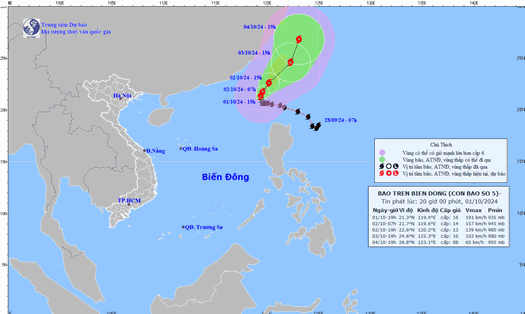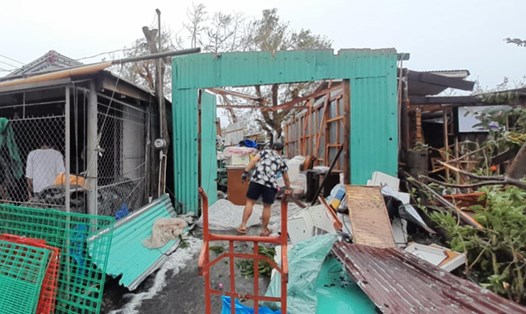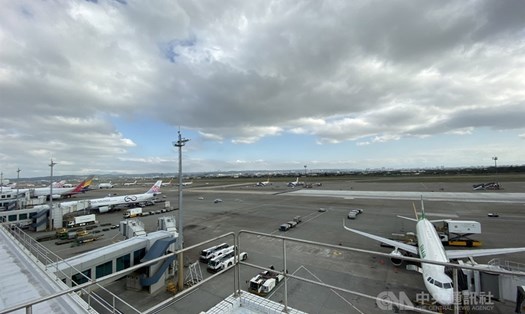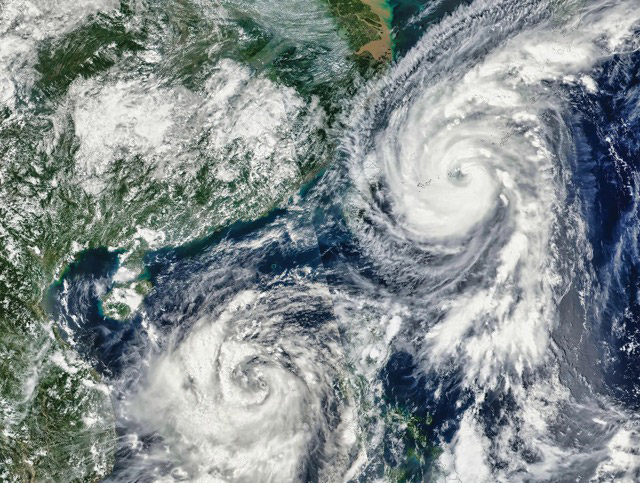
It is currently typhoon season in the Eastern Pacific region, so the weather in destinations such as Japan, Korea, Taiwan (China), Hong Kong (China), Philippines... often has heavy rain and strong winds.
According to The Mainichi, Typhoon Jebi (also known as Japan's Typhoon No. 17) is expected to affect eastern Japan, including Tokyo. According to the Japan Meteorological Agency (JMA), Typhoon Jebi will pass through eastern Japan in the next few days, from October 2. The storm's wind speed is more than 110km/h, moving at about 15km/h.
The name Jebi evokes bad memories of 2018, when Japan was hit by a typhoon of the same name that left the highest insured loss on record. The storm damaged nearly 98,000 homes and left nearly 3 million people without power. It killed 14 people and injured 980.
Meanwhile, Typhoon Krathon is forecast to make landfall between the night of October 2 and 3. Also known as Japan's Typhoon No. 18, the storm is expected to make landfall in southern Japan, around the Okinawa Islands.
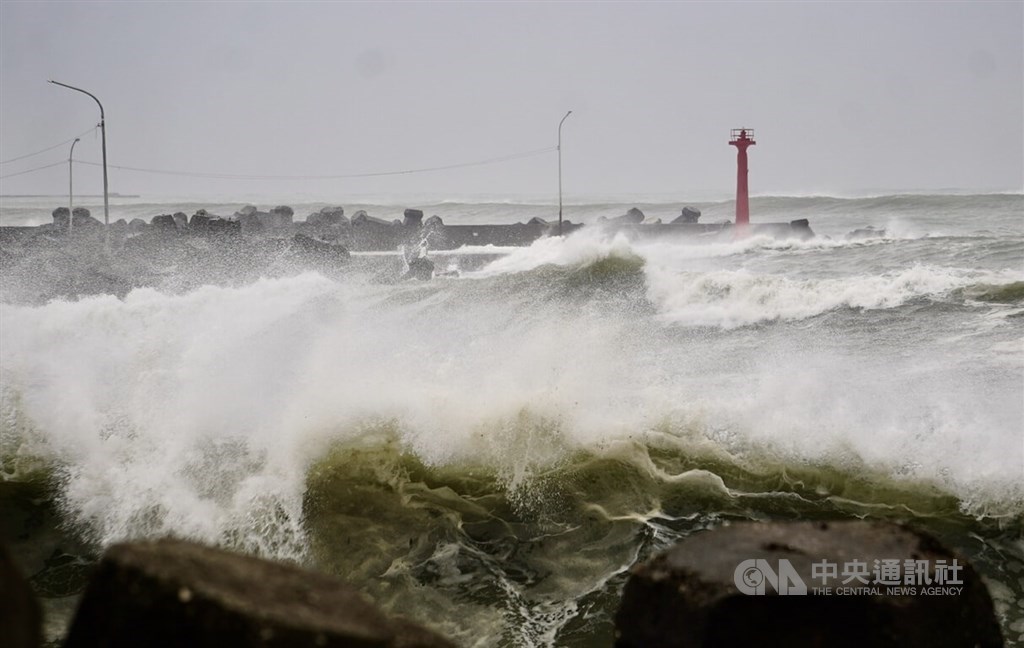
Domestic flights in the Okinawa and Kanto regions (Japan); Hong Kong and Taiwan (China); and the Philippines may be affected, so travelers should check with their airlines for updates.
Taiwan (China) has closed its airport, canceled a series of flights and ferries, and evacuated thousands of people ahead of Typhoon Krathon, which is forecast to make landfall on October 3.
Typhoon Krathon, with sustained winds of 173 km/h and gusts of up to 209 km/h, is expected to make landfall in the port city of Kaohsiung, Taiwan, China, in the early morning of October 3. Previously, the storm brought heavy rain and strong winds affecting the weather on land in Japan, the Philippines and Taiwan, China.
Meteorologists warned that Krathon would be “as strong” as Typhoon Thelma, which devastated Kaohsiung city in 1977, killing 37 people and injuring 298.
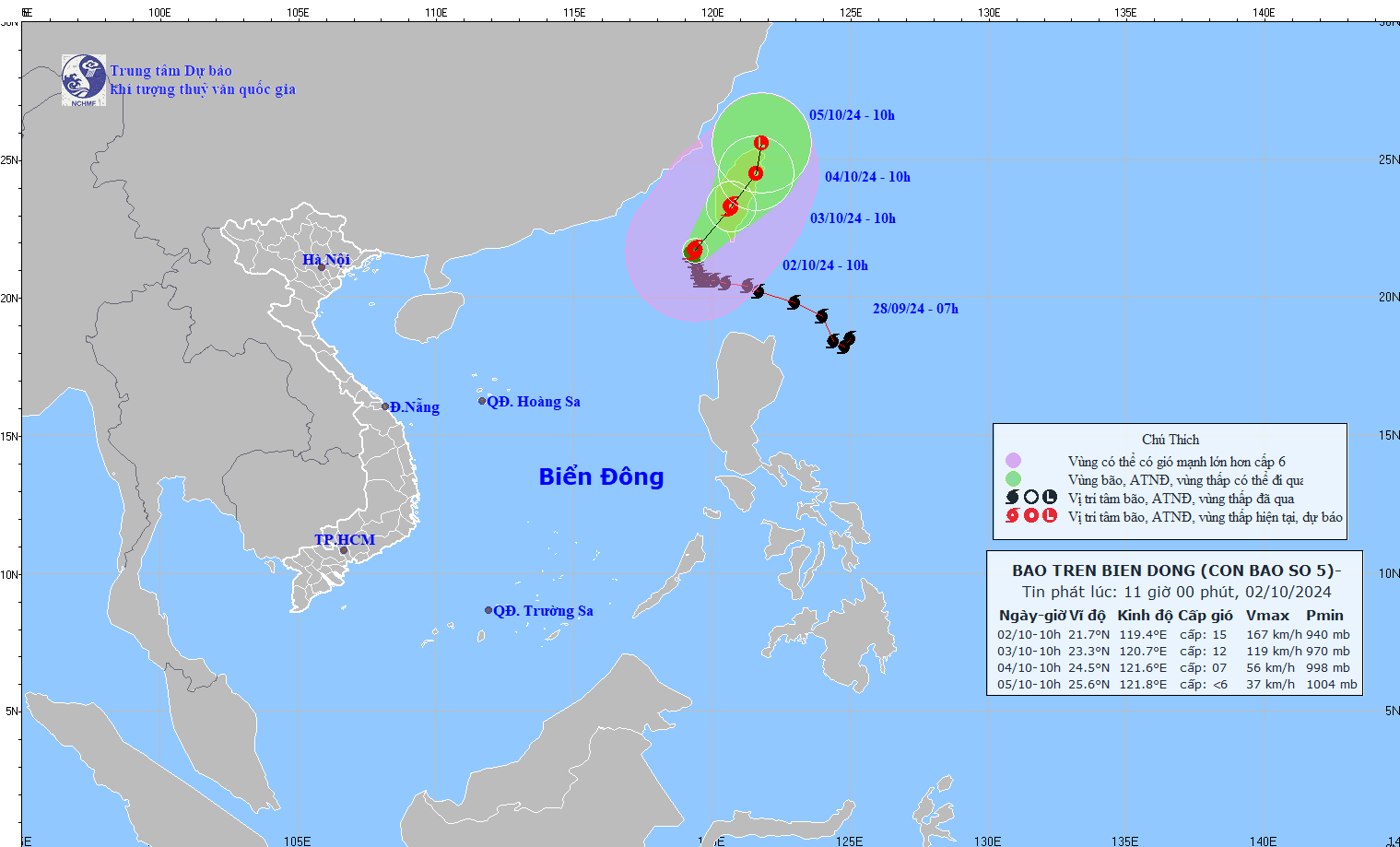
According to the National Center for Hydro-Meteorological Forecasting, at 10:00 a.m. on October 2, the center of the storm was located at about 21.7 degrees North latitude; 119.4 degrees East longitude, in the northeastern sea of the North East Sea area.
The strongest wind near the storm center is level 14-15 (150-183km/h), gusting over level 17; moving in the North Northeast direction, speed about 5km/h.
According to current forecasts, the storm is unlikely to affect coastal and inland areas of Vietnam. However, flights to affected areas in Taiwan and Hong Kong (China) or Japan may be affected. Therefore, passengers need to regularly update weather forecasts, announcements from airlines, and travel service providers to be aware of the situation.

